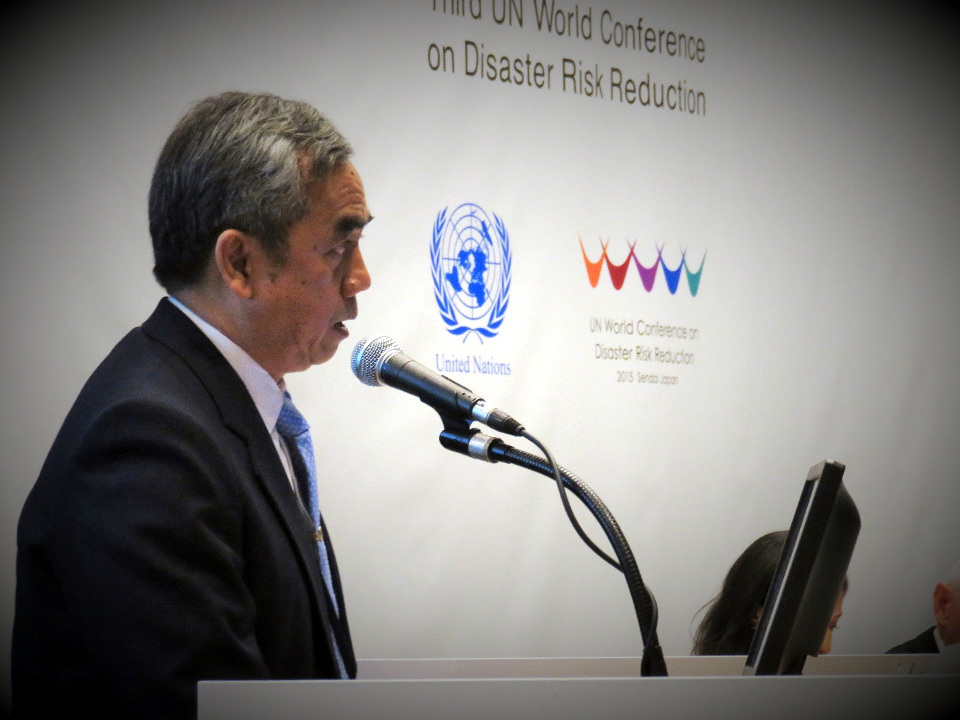NDRRMC Highlights Pre-Disaster Risk Assessment as a Means to Saving Lives During Pre-evacuation
16 March 2015, Sendai, Japan – Undersecretary Alexander Pama, Administrator of the Office of Civil Defense (OCD) and Executive Director of the National Disaster Risk Reduction and Management Council (NDRRMC), today shared the Philippine best practices in disaster risk reduction and management drawn from experiences in recent natural calamities.
 Speaking at the “Working Session: Preparing for Disaster-Induced Relocation” during the Third United Nations World Conference on Disaster Risk Reduction (WCDRR) on 16 March 2015, Undersecretary Pama said “the ultimate objective of evacuation is saving lives”. The discussion focused on the sharing of best practices, opportunities and challenges in integrating human mobility within the national, regional and international DRR plans and frameworks.
Speaking at the “Working Session: Preparing for Disaster-Induced Relocation” during the Third United Nations World Conference on Disaster Risk Reduction (WCDRR) on 16 March 2015, Undersecretary Pama said “the ultimate objective of evacuation is saving lives”. The discussion focused on the sharing of best practices, opportunities and challenges in integrating human mobility within the national, regional and international DRR plans and frameworks.
Undersecretary Pama shared the Philippine experience in the evacuation of almost 800,000 individuals to safer grounds as part of the government’s preparation for Typhoon Ruby (“Hagupit”) in December 2014. Taking off from the lessons from Typhoon Yolanda (“Haiyan”), the NDRRMC has adopted the Pre-Disaster Risk Assessment – Actions, Protocols and Programs (PDRA-APP) in the conduct of pre-emptive evacuation.
Undersecretary Pama said the PDRA-APP is a tool and a process that is a “Hazard specific, Area focused, and Time bound” risk assessment and not only based on “across the board” warning signals. It addressed the questions, what is the potential hazard, where are the areas that will be affected, what is the potential impact, and where are the safe areas for evacuation. The PDRA-APP also assessed the duration of Typhoon Ruby, which was a factor in determining how long people will be evacuated. The PDRA-APP provides inputs as basis for determining the appropriate actions that were undertaken by the national and local government units.
At the end of the session, Undersecretary Pama emphasized that while temporary pre-evacuation is important in addressing the immediate life-saving needs of the communities, long term planned relocation is also essential for the sustainable development of the population. END
























